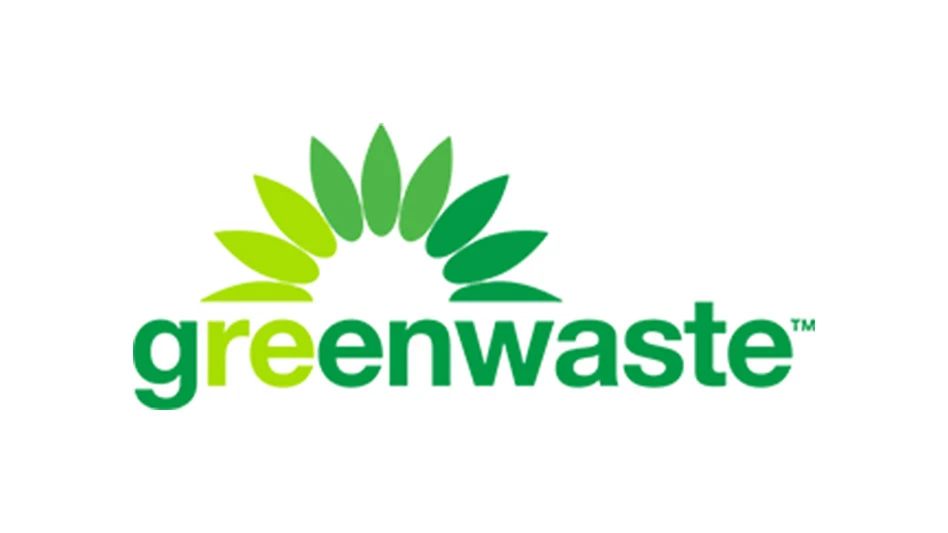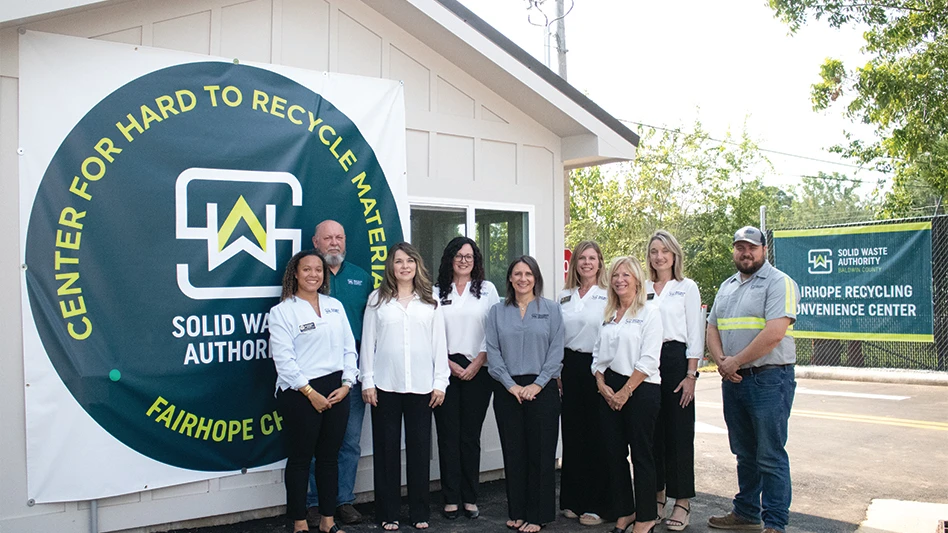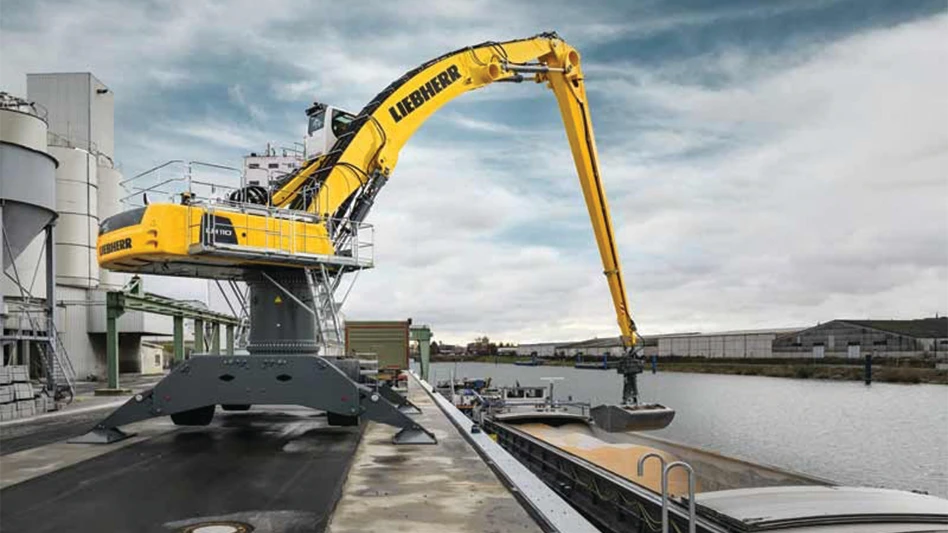San José's move to single-stream recycling will involve changes for residents, employees and processors.
The dome-like building on Charles Street in San José is bustling, as it always is on weekday afternoons. Collection trucks arrive in a steady procession to deliver their contents, which are weighed, dumped, sorted, crushed, baled and stacked.
The scene is a familiar one, but it’s not business as usual at the GreenTeam materials recovery facility (MRF), where dramatic changes are taking place in a closed-off section of the 20,000-square-foot structure. There, standard conveyors, bins and “10-finger picking” operations have given way to mechanical sorting and separating equipment that will soon accommodate the City of San José’s move to single-stream recycling.
About a mile to the east, similar machinery is being installed in a vacant building that will become the MRF that Norcal Waste Systems, San Francisco, will use to process its share of San José’s residential recycling stream, through a subcontract with California Waste Systems.
PLANNING THE SWITCH
Starting July 1, San José will switch from source-separated to single-stream recycling for its 195,000 single-family and 85,000 multi-family dwellings. Clean ‘n Green San José—a modification of the nine-year-old Recycle Plus program that virtually tripled residential recycling volumes when it was introduced—will allow residents to put all of their recyclable materials into a single cart. The changeover, four years in the making, is part of a growing national trend that is altering the culture of curbside pickup, waste industry employment patterns and MRF operations.
Research determined the benchmarks for success: simplifying recycling for residents, improving collection techniques and maximizing landfill diversion rates to exceed state mandates—and doing all this as cost-effectively as possible. Based on a detailed list of criteria to ensure fairness and objectivity in awarding contracts, the City selected GreenTeam of San José and Norcal Waste Systems.
GreenTeam, which has worked with the City since 1993, will service about 45,000 single-family homes in one of three districts and all of the City’s multiple-family dwellings.
Norcal, which is new to San José but has extensive experience in Northern California, will service the other two districts, which comprise about 150,000 single-family homes.
“The division of labor makes sense in a large City such as San José,” says Harvey Gershman, co-founder of Gershman, Brickner and Bratton, a national solid-waste management consulting firm based in Fairfax, Virginia. “It’s a nice way to spread the work around and have some [options],” he comments.
|
Carrots and Sticks |
|
To encourage continued high quality service throughout the term of the service contracts, the city of San José has incorporated “carrots and sticks” in the service contracts. These carrots and sticks take the form of financial incentives and disincentives based on the performance of contractors. Additionally, a contractor’s failure to meet the minimum requirements or the performance standards set in the contract tie directly to potential term extensions. In alignment with the San José’s recycling goals, the city has set minimum diversion requirements in the single family and multi-family solid waste and recycling contracts. For example, the companies providing single-family service are required to achieve a minimum of 35 percent diversion from their service districts (not including yard waste). This requirement was clearly specified in the RFP. There are also incentives for exceeding the minimum diversion requirement. The city offered companies an annual bonus for exceeding the minimum diversion rate. As part of their cost proposal, companies were asked to submit an annual per household incentive rate for the achieving diversion rates of 40, 42, 44 and 46+ percent. If a company achieves any of these higher diversion rates, they will have earned the annual incentive payment. Failure to meet the minimum diversion rates set forth in the contract will result in the levy of an administrative charge based on the degree of deviation from the minimum requirement. For example, a $10,000 administrative charge would be assessed for a diversion shortfall of 0.001 percent to 2 percent and a $25,000 administrative charge would be assessed for a diversion shortfall of 2 percent or greater. |
Such arrangements are certainly prudent, and contracts with both haulers include performance guarantees for reliable, litter-free pickup. Both Norcal and GreenTeam have impressive track records for customer satisfaction, innovation and materials processing — all requisites for their selection. In fact, the manner in which they addressed the requests for proposals (RFPs) call for the phased introduction of alternative fuel vehicles and operational efficiencies demonstrates their resourcefulness. Both proposed using cleaner burning diesel derivative fuels and split-body collection trucks for their single-family-home routes.
“We were obliged to bid the contract as a single-stream commodity, but the trucks were our option,” says John Nicoletti, Norcal’s general manager in San José. “The use of the split-bodied vehicle, with one compartment for recyclables and the other for trash, matched perfectly with San José’s requested system.”
Both companies will use split-body trucks that allow for collection of the wheeled recycling carts and garbage carts in the same trip. This option will also help to improve workplace safety because drivers will remain inside the truck using interior controls to choose the correct compartment. While automated garbage collection began in 1993, source separated recyclables were collected manually. A key element of the split-body trucks is the packer paddle or flipper gate, which sits inside the hopper and rotates 180 degrees to allow for appropriate distribution of recyclables and garbage and ensure they aren’t mixed. Compaction ratios in the recyclables compartment have been gauged to maximize loads while minimizing glass breakage.
HIGH-YIELD RETURNS
Single-stream recycling helps to increase diversion, which is no small concern in California. San José, with a preliminary 53 percent diversion rate for calendar year 2000, already exceeds the state-mandated requirement of 50 percent but, given the exigencies of environmental legislation and public policy, it’s a sound strategy to increase the diversion rate even more.
|
EARNING AN EXTENSION |
|
In San José, contractor performance has been tied directly to potential extensions of the recycling collection and processing contract term. The base term of the new contract is five years. If the contractor meets the city’s minimum diversion requirement and has not exceeded $100,000 in administrative charges in any of the calendar years, the contractor will be offered an automatic three-year term extension. A total of two three-year extensions are available through the structure of the contract, bringing the total potential contract term to 11 years. However, if the contractor fails to meet the minimum diversion requirement and exceeds $100,000 in administrative charges in any calendar year, the contractor loses its right to term extension beyond the base five-year term. If the contractor fails to meet the minimum diversion requirement but does not exceed $100,000 in administrative charges in any of the years, the city has the right to offer or not offer an extension option to the contractor. In addition to the carrots and sticks incorporated in the contracts, the city also uses a team-based approach to managing its program and contracts. Staff works very closely with the contractors throughout the term of the program to address issues and areas concern. This approach, in combination with the carrots and sticks, should ensure that San José continues to provide high quality service to its residents and that the city continues to push the envelope on diversion.. |
The contracts with both haulers, which run for five years with two three-year extensions if expectations are met, call for a minimum of 35 percent diversion from the single-family waste stream, an increase of about three percentage points from the current amount achieved.
Weslie Brandon, GreenTeam’s community outreach supervisor, believes that 35 percent is well within reach based on GreenTeam’s pilot program results. “When people don’t have to think about where to put their recyclables, they recycle more,” she says. “Also, the single-stream recycling containers are larger than the multi-sort containers, so residents have a bigger space in which to put more stuff.”
The Clean ’n Green San José contract with GreenTeam calls for 25 percent diversion the first year, 30 percent the second year and 35 percent by the third year, which would put multi-family dwellings on par with single-family residences and represent a significant increase from the current 12 percent rate.
Both haulers have been given substantial leeway in their approach to processing the recyclables, and they structured their operations in very different ways to meet an expected volume increase of five to 25 percent.
Norcal has a large MRF in San Francisco, but its distance from San José would have made its use impractical, so the company chose to lease a new MRF from California Waste Solutions, a regional recyclables processor and marketer. “We’ve had a longstanding relationship with California Waste Solutions, and we’ve worked well together over the years,” Nicoletti said. “This was a way to solidify our partnership.”
GreenTeam opted to retool its own MRF and deal directly with commodities buyers. “We’re the captain of our own ship,” says Virginia Palafox, the MRF manager. “We have the capacity to expand or to meet changing market conditions, including the switch to single-stream recycling, and we can also augment our storage capacity if need be.”
In neither case will the city share revenue generated by recyclables sales. Although some municipalities have chosen to become partners, accepting the risk of down markets in return for cost savings in their contracts, San José decided to avoid the extra layer of management and auditing that would have been required to ensure that the city’s best interests were being followed. The cost savings on the front end of the contract more than offset any potential windfall at the MRF.
The overriding concern for any single-stream recycling operation is contamination, (the mixing of garbage and recyclables), which can drive up the costs of processing and drive down the price of commodities. The operative question is how much contamination is acceptable. In the abstract, “anything above zero is unacceptable,” says Gershman, “but you have to work that out. It comes down to [consumer] education and the efficiency of the processing plant.” The City plans to closely monitor recycling and contamination rates and will develop educational campaigns in response to any emerging trends.
Both GreenTeam and Norcal anticipate contamination rates of no more than 10 percent to start and more noticeable reductions as residents grow comfortable with their new recycling routine.
If Clean ’n Green San José demonstrates that single-stream recycling is not only environmentally sound but also economically viable, it’s because of the groundwork laid and the teamwork shown at the start of the process.
Elaine Leung is the manager of residential services for the City of San José Environmental Services Program.

Explore the May 2002 Issue
Check out more from this issue and find your next story to read.
Latest from Recycling Today
- Dow, Mura Technology cancel chemical recycling plant in Germany
- Brightmark, Lewis Salvage partnership processes 1M pounds of medical plastics
- US paper recycling rate, exports down in '24
- Century Aluminum to restart idled production at South Carolina smelter
- Teaching kids the value of recycling
- ELV Select Equipment, Reworld aid NYPD in secure firearm disposal
- Some observers fear plastics treaty talks veering off course
- Advanced Polymer Recycling acquires TKO Polymers






